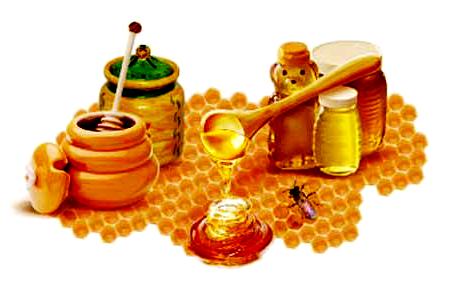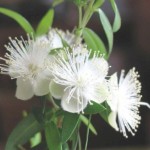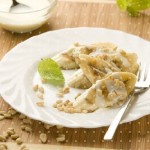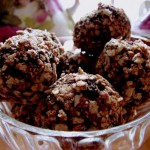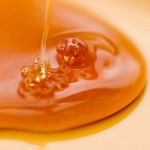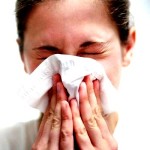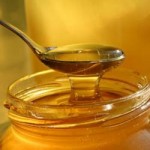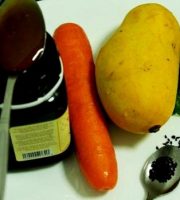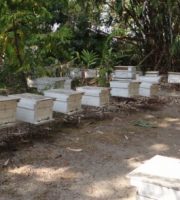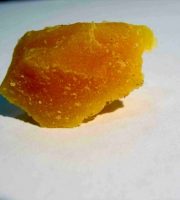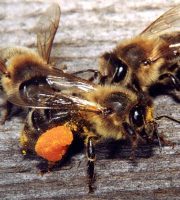In a very short time, just over 15 years, the way of people thinking about healthy food has significantly changed, or perhaps they just became indifferent to what they eat. We can not say that before this field was ideal, but people did not have “healthy advertisement” in the last century and even more they did not add chemicals to flavor food. Honey has traditionally been considered as a healthy natural product, but does the quality of honey always meet our expectations?
“Just throw the cube into the broth” – an advertising advises, and the packaging of bouillon cubes honestly shows what flavors and flavor enhancers this product contains. But who is concerned about how we will pay for such a diet?
In the Internet you can find detailed lists of allowed and banned supplements, such as E-110 – “very dangerous food additive. May cause allergic reactions, nausea. Banned in some countries”.
Or “sodium benzoate” (E-211) does not only enhances the taste, but is an allergen and carcinogen.
After studying the labels of products brought from the store, you come to the conclusion that most of them you do not want to eat. In such a situation, of course, the popularity of natural products increases. One such product – is honey. However, the emergence of low-quality honey generates various rumors. Let us clear some of them.
Synthetic honey
The worst type of honey. Modern science has learned to synthesize chemical substances, which can be added to the sugar syrup and you can get a taste reminiscent of the taste of honey. Synthetic honey, masquerading as natural, is selled for approximately 1.5-2 times lower than normal. It has a label that says “Honey” and a very small, almost illegible note: “composition – sugar, flavoring, thickening … dyes …”). Synthetic honey is determined easily if you used real, natural honey. Surrogate – is tasteless.
Mixed honey
The idea of “business” is obvious: the honey is diluted with boiled sugar syrup and sold as ordinary honey. Per kilogram of syrup you need less than one kilogram of sugar, because there is water, which also gives the weight. It can turn out unnoticed, and as a result – the profit is about 10 times more.
The part of honey of course is reduced, although its beneficial properties remain. If you refuse to buy it, you have to be consistent and stop to purchase fruits and vegetables, grown using the latest advances of genetics and chemistry. You buy very beautiful fruits grown by the “intensive” technology, when the proportion of nutrients and vitamins in them is reduced, or hydroponic vegetables – they have form and color, but there is no taste and benefit.
Sugar Honey
It is obtained by feeding the bees with sugar. There are many different techniques of such feeding, ranging from relatively harmless as placing of a small sugar pastil cooked with herbs and to digging ditches near hives and filling them with molasses (cheapest confectionery). Molasses can not be used for direct cultivation of honey because of the smell, but if you pour it in front of the hives, the bees collect and process it, substantially increasing “productivity”. Obviously, it is not pure honey but they get the profit.
Chemical honey
When the bees are sick, beekeepers begin to treat them. And there is harmless means of treatment when without opening the hive, you pump the useful smoke from natural herbs inside, and there are “modern”, “progressive” means, based on chemicals that sprayed on the bees and honeycomb. Most of these drugs are harmful to humans and bees. However, their concentrations in honey is so small that any yogurt (especially with a month storage period) with the content of the various E-*** leaves it far behind, but, alas, they are.
Cedar honey
Modern marketing invention. Sometimes honey is lime, buckwheat, floral, now there is cedar. In general, the idea is simple – an apiary is located in a place where there are cedars, and a tiny percentage of their pollen is present in the honey. So there is a unique product, an exclusive delicacy. However, it is completely harmless type of honey, the only difference is the price.
Raw honey dangers
Collecting nectar, bees gradually fill the cell, and in the process of filling honey is evaporated. Indeed, the nectar collected by bees contains a lot of water – sometimes up to 2/3, and it’s pretty liquid. Bee hive is constantly heated, 35 C (95 F) – the consistently maintained temperature in the place of brood and bees actively ventilate it. As a result they remove excess water, honey becomes thicker and gets 2-3 times less space, which is important from the point of view of bee stocks for winter. Bees seal the filled cells and the honey ripens there.
Before processing the honey, the beekeeper first removes caps from the cells, and then put in the extractor (centrifugal machine for processing honey from the honeycomb).
But some beekeepers put in hives “bodies” with low frames. Bees fill them, but do not have time to seal. “Bodies” are removed, honey is processed and they are put back to the hive. In terms of industrial beekeeping there are several advantages. First, there is no manual operation of opening the cells, that is, everything happens faster, and if there are several dozen hives – it is significant. Secondly, honey contains more water and more weight. Third, there is no need to “dry out” the framework. Fourth, this honey is easier to process. Although there are a couple of “cons”. First, if the beekeeper overdid and pumped honey off quite early, even during transport in a 40-liter jars it will wander and foam, which does not happen with quality honey. Secondly, it is believed that honey should stay in sealed wax boxes at least for a couple of weeks and then it is ready – it successfully ends processes at the level of enzymes (fermentation) and the so-called structure of honey appears, it is impregnated with a pleasant smell of wax and gets unique taste and aroma. Note that the raw honey – is even more harmless, compared to previous ones.
Buy only thick honey, buying a watery honey, you purchase raw honey without useful properties. Plus, in the process of storage you get fermented honey.
Honeycomb
Sold in sealed cells. This honey is difficult to collect and transport (cells tend to flow with minimal vibration), but there could be a complete guarantee that honey is ripe and not mixed, this honey is valued much more than ordinary. For those who just went to prepare a purse, let me note that the honey in the comb does not guarantee that the bees are not fed with sugar and that the product has not bee drugs.
The honey situation at the state level
In Germany, for example, consumption of honey is 5 kg per person per year, on average in the European Union countries – 3.5 kg, in Japan – 7 kg, in Saudi Arabia – up to 8 kg per year. It is known that honey is a good preventive measure. Consuming pollen and enzymes of various plants in miniscule amounts, the body maintains a healthy reaction to them during the year.
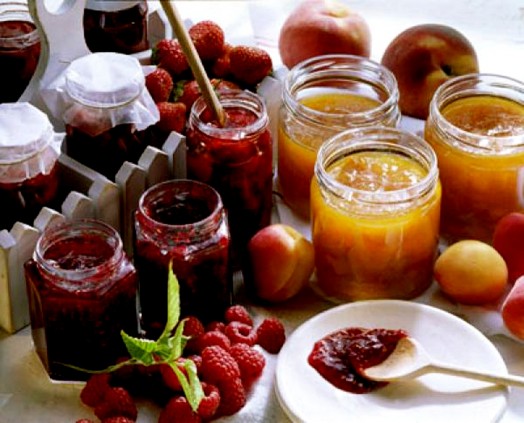
What to do?
Today, in spite of the high price of honey, there is a sufficient number of beekeepers who do not like to give cheap honey to dealers, and do not sell by themselves. As a result, they produced honey, often with remarkable quality, and they are willing to give it away.
You can cooperate several families to find these beekeepers and buy their good honey.
Where to look for such beekeepers? A good search option – through beekeeping stores, and in the smaller towns and villages.
There are simpler ways – for example, you can have the opportunity to meet the farmers who grow many different crops without fertilizer. They can also have an apiary.
Finally, today there are beekeepers who have sites in Internet.
Finally, the most difficult but also the most pleasant way – is to keep the bees by yourself. It will take time, of course, but if there is a plot with a garden – you can keep up to 10 bee colonies.
Before people treated diseases with honey and milk, made honey lotion, used honey as an antiseptic. Now various chemicals actively displace organic foods and honey is a delicacy and sometimes a medicine.
Finding a good quality honey is completely real, so the choice is yours, and the responsibility for your own health and the health of your family, too, is yours.
How to taste honey
Put in a glass 30-35 grams of honey and cover. Define its color in the daylight. Honey can be light, medium and dark. Open glass and stir honey. Then slowly start to inhale its fragrance. It is much easier to identify the scent of honey after the pre-heating in a water bath for 10 minutes. First try to determine the most powerful aroma. Getting used to it, you can feel and weaker “notes”. Valuable varieties of honey have differ gentle, pleasant aroma. Low-quality honey has strange smell and a faint odor.
Now take a little honey with a spatula, heat up to 30 degrees C (86 F), and try to taste. Almost all varieties of honey have a strong sweet taste and a few, such as chestnut, willow, – a bitter taste, and heather – even astringency.
Poor honey may have the appearance of a sour taste, due to the fermentation of product.
Important sign of the maturity of honey – its consistency ( viscosity). To determine the viscosity, heat a tablespoon of honey to a temperature 20°C (68 F) and fast turn a spoon in a circular motion several times. Mature viscous honey does not drip with large rare drops but stays on the spoon. However, we must remember that the acacia and clover honeys are very liquid honeys; blooming sally, lime and buckwheat – liquid, sunflower, dandelion and honeydew – thick, heather – jelly.
The viscosity of honey depends on the temperature, since at 30°C (86 F) the viscosity is almost four times less than at 20°C (68 F). Viscosity also depends on the humidity. The viscosity of honey with 25% humidity is close to the viscosity of water and honey with 18% humidity – 10 times higher than that water. Therefore, you should remember that the maturity of honey is directly related to the viscosity and humidity. Unripe honey with humidity over 21% will not be stored, it will begin the process of fermentation.
Dissolve the honey in water in a ratio of 1:2. The solution will turn turbid with iridescent tints. Precipitation shows that honey has insoluble impurities. Add a few drops of vinegar. If there is foaming (release of carbon dioxide), there is an admixture of chalk. Now drip a few drops of a solution of tincture of iodine. The blue color indicates the presence of starch or flour. Try adding a little of 5-10% solution of silver nitrate. Precipitate indicates the admixture of sugar syrup.
You can check the activity of the enzyme diastase in honey. Diastase activity in the decomposition of starch, is counted in diastase number (DN) – from 0 to 50. Normally it is at least 5.
Diastase content in honey depends on its botanical origin, soil and climatic conditions in which the honey plants grow, the weather at the time of collecting of nectar, processing of honey and a number of other reasons.
To determine it pour in the tube 10 ml of an aqueous solution of honey, prepared in a 1:2 ratio, add a little bit of 1% starch solution and place the mixture for 1 hour in a water bath at 45 degrees C (113 F), then cool and drop one or two drops of tincture of iodine . Staining of solution in a blue color indicates lack of diastase, and therefore it is not a natural honey.
Diastase is partially or completely destroyed by heating above 50 C (122 F).
Old method of processing
Natural honey – is a unique gift of nature, it has a great taste and nutrition. This high-calorie product – is a valuable source of carbohydrates, contains almost all the macro-and trace elements, enzymes, vitamins, hormones and essential oils.These substances are in it in a balanced ratio, which makes their properties highly efficient and beneficial for human health.
However, not all natural honey can have high quality, which is related to the current state of the environment and the technology of its production. Even 300-500 years ago hundreds of species of plants pollinated by insects grew in abundance in meadows, fields, and particularly in the forests. Now in many apiaries you can find no more than 45-50 different honey plants.
Second – the processing method can be pressing. This honey has no contact with the metal objects: sectional frames are taken out of the hive and honeycombs are cut with oak blades. You can put pieces of combs in wooden trough with small holes and linen filter on the end and knead them with wooden pounder. Filtered honey drips into a wooden barrel. Then pour it into glass jars.
Analyses of these samples of honey showed that the quality of pressed honey is significantly higher than quality of centrifugal and even honey from cells. Pressed honey contains salts of iron, manganese, iodine, vitamin PP and protein 1,8-3,6 times more than in the centrifugal honey and honey in honeycombs. There is a big difference in content of calcium, potassium and enzymes.
Thus, the quality of honey is highly dependent on the technology of its production and diversity of honey plants. Especially valuable is pressed honey, derived by old method.

